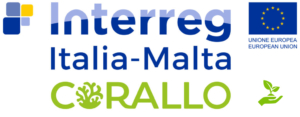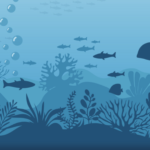The University of Malta brings the Sea to the Museum through the CORALLO project
The third Steering Committee meeting of the CORALLO project, the only Interreg Italia-Malta 2020 Programme project currently coordinated by the University of Malta, was held earlier this week in the archaeological museum on the island of Lipari in the Aeolian Islands. During the same meeting, progress in the identification and procurement of the latest digital media and projection facilities, whilst the project partners were also taken on a guided visit to the bronze age village on Capo Graziano, situated on the far-flung island of Filicudi.
These edutainment facilities and assets include Virtual and Augmented Reality classes, 3D models, latest-generation interactive panels, WIFI-operated underwater CCTV cameras, multispectral drones, smartphone apps, the gaming approach, a mobile exhibition, underwater documentaries streamed on social media and even a boat crossing between Sicily and Malta and vice-versa, serving as an ocean literacy platform). The millennial historic connections between the Maltese and Aeolian Islands were also expounded upon by the current director of the Luigi Bernabo Brea archaeological museum on Lipari.
The project will run for 30 months, until 13 May 2023, with a total budget of slightly over 1.5 million euros. The three Maltese partners on the project (the University of Malta, the ERA and Heritage Malta) have a combined budget exceeding 800,000 euros. From an international perspective, the project is consistent with the UN’s Decade for Ocean Sciences (2021-2030). From a European perspective, the project is consistent with the Green Deal and the EU’s Biodiversity Strategy, which was rolled out in May 2020. From a Maltese/local perspective, the project is consistent with ERA’s obligation to conduct a dissemination strategy for local marine Natura 2000 sites, which collectively cover a total area equivalent to 35% of our Fisheries Management Zone (FMZ), in excess of 4100km2, or 14 times the terrestrial area of the Maltese archipelago.
CORALLO is coordinated by Prof. Alan Deidun from the Department of Geosciences, with the direct participation of Dr Adam Gauci, Mr Johann Galdies, Mr Marco Iannacone and Ms Jessica Busuttil as well. The project builds on the legacy of a previously-funded Italia-Malta project – PANACEA – which also saw the participation of Prof. Alan Deidun, completed in 2013, and which saw the opening of the first-ever marine environmental education centre in Dwejra, Gozo, a centre which was bestowed in August 2019 with the Gozo Tourism Achievement Award.
Iconic species and habitats found within the marine Natura 2000 sites interested by the project will feature within the dissemination material to be produced. The project aims to contribute to the responsible enjoyment of local marine NATURA 2000 sites (MPAs) through a diverse array of edutainment tools which represent both an awareness-generation resource as well as a means of informal education for a varied spectrum of audiences. These edutainment tools include both non-mobile/fixed assets and mobile ones, which will be installed, with the consent of Heritage Malta and the MTA, within four of Malta’s most iconic public Museums located on the coast or in close propinquity to local Natura 2000 sites – i.e. the Malta Maritime Museum in Birgu, the Natural History Museum in Mdina, the Ghar Dalam Museum, the Hagar Qim/Mnajdra visitors centre and the White Tower Bay museum
Further information on the CORALLO project can be gleaned from the website as well as from the project’s social media (Facebook and Instagram) pages.



